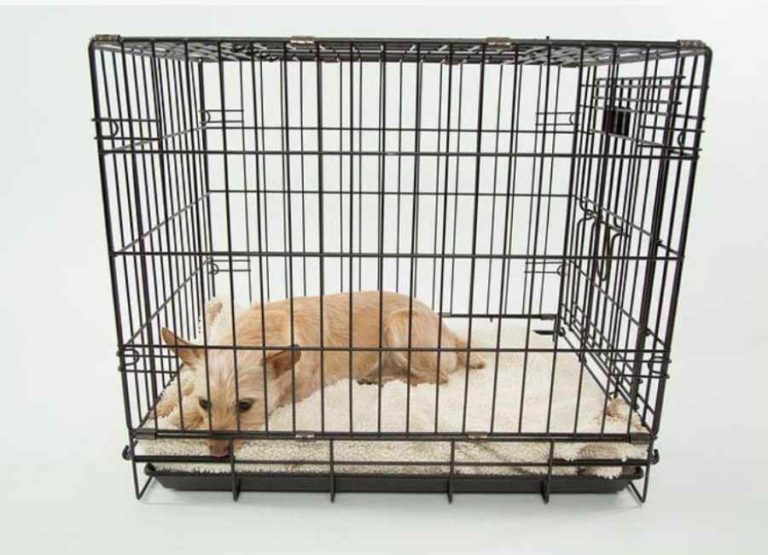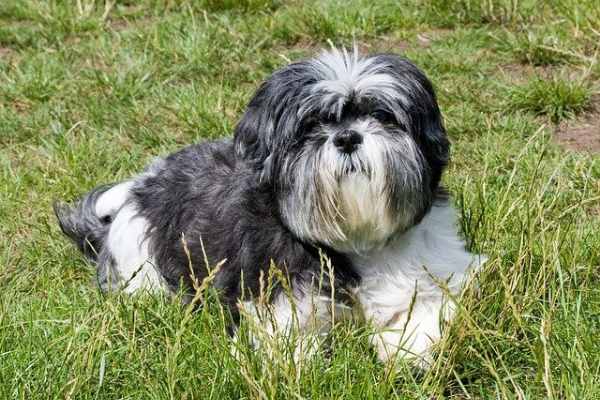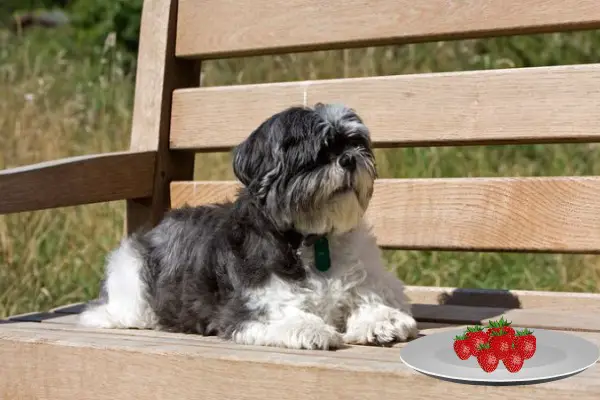Do Great Pyrenees Need Another Dog [Answered]
![Do Great Pyrenees Need Another Dog [Answered] Do Great Pyrenees Need Another Dog](https://petcreeks.com/wp-content/uploads/2023/04/Do-Great-Pyrenees-Need-Another-Dog.jpg)
Are you wondering whether your Great Pyrenees needs another dog friend?
Adding another canine to your family can be a tricky decision, but we’re here to help you weigh the pros and cons.
In this blog post, we’ll explore the benefits and drawbacks of getting another dog for your Great Pyrenees, so you can make an informed decision.
Keep reading to find out more!
Do Great Pyrenees Need Another Dog
Great Pyrenees do not necessarily need another dog, as they can be content as the only dog in a household.
However, they do benefit from socialization and may enjoy the companionship of another dog if introduced properly.
Do Great Pyrenees get along with other dogs?
Great Pyrenees dogs are generally known to get along well with other dogs, especially when they are properly socialized and introduced in a positive way.
However, like with any breed, some Great Pyrenees individuals may not get along well with other dogs and may require more careful management or training.
It’s important to supervise interactions between dogs, especially when they are meeting for the first time, and to introduce them slowly and in a neutral environment.
Learn more about your Great Pyrenees staying alone at home.
Understanding Great Pyrenees Temperament
The Great Pyrenees are known to be loyal, affectionate, patient, and calm, and make good watchdogs and guard dogs.
However, they can be independent and stubborn during training, so patience is required.
It is important to research and understand the breed’s temperament before getting another dog to ensure a good match.
Considerations Before Getting Another Dog For Great Pyrenees
Here are some common things to consider before getting another dog for a Great Pyrenees:
- Temperament – Great Pyrenees are known for their independent nature and strong guarding instinct. Consider a dog with a compatible temperament.
- Size – Great Pyrenees are large dogs, so make sure the new dog’s size is appropriate and won’t cause issues.
- Breed – Consider the breed of the new dog and its compatibility with your Great Pyrenees.
- Gender – Consider the gender of the new dog and how it will interact with your current Great Pyrenees.
- Age – Consider the age of the new dog and how it matches up with your current Great Pyrenees.
- Activity Level – Great Pyrenees are relatively laid back, so consider a dog with a compatible activity level.
- Health – Make sure the new dog is healthy and up to date on vaccinations.
- Training – Consider the training needs of the new dog and how it will fit in with your current Great Pyrenees.
- Space – Great Pyrenees are fairly laid back and don’t require a lot of space or exercise, but consider the added space needs of a new dog.
Pros of Getting Another Dog For Your Great Pyrenees
Getting another dog as a companion for your Great Pyrenees dog can have many benefits, including:
- Companionship: Dogs are social animals, and having a companion can provide your Great Pyrenees with constant companionship and a playmate.
- Reduced Anxiety: Dogs can suffer from separation anxiety, which can lead to destructive behavior when they’re left alone. Having a companion can help reduce their anxiety and provide them with comfort and a sense of security.
- Exercise: Dogs need plenty of exercise to maintain their health, and having a companion to play with can help increase the amount of exercise they get.
- Improved Training: Another dog can provide an opportunity for your Great Pyrenees to learn good behavior through observation and to practice obedience training.
- Reduced Boredom: Dogs can get bored quickly, especially if left alone for long periods. A companion can keep them entertained and occupied.
- Protection: Great Pyrenees dogs are known for their protective instincts, and having another dog in the house can provide an additional layer of security.
- Socialization: Having another dog can help your Great Pyrenees socialize with other dogs and humans, which can make them more confident and well-rounded.
- Decreased Destructive Behavior: Dogs can exhibit destructive behavior when they’re bored or anxious. Having a companion can help reduce these behaviors.
- Bonding: Having another dog can also help your Great Pyrenees develop strong bonds with other animals and become more empathetic and compassionate.
Cons of Getting Another Dog For Your Great Pyrenees
Here are some cons of getting another dog for your Great Pyrenees:
- Double the effort: Having a second dog means twice the amount of work, including feeding, grooming, exercising, training, and providing medical care.
- Increased expenses: With another dog comes an increase in expenses, such as food, vet bills, and potential training costs.
- Personality clashes: Not all dogs get along with each other, so it’s important to carefully consider the personalities of both dogs before bringing them together.
- Jealousy and competition: A dog may feel threatened by the arrival of another dog and may become jealous or even aggressive towards the new pet.
- Separation anxiety: If one dog is more attached to their owner, it may experience separation anxiety when left alone without a companion.
- Territory issues: Dogs are territorial animals, and adding a new dog to the household can cause conflict over territories and resources such as food bowls, and toys.
- Increased noise level: Two dogs means twice the amount of barking, which can be problematic if you live in an apartment or have close neighbors.
- Health concerns: Two dogs in close proximity can increase the risk of spreading illnesses, parasites, and infections.
- Time commitment: Having more than one dog requires a significant amount of time and energy, which can be challenging for busy pet owners.
Learn more about the Great Pyrenee’s separation anxiety.
How to introduce a new dog to your Great Pyrenees
Introducing a new dog to your Great Pyrenees can be a complex process and should be taken carefully.
Here is a step-by-step guide to help with the process:
- Start the introductions on neutral ground: Introduce the dogs in a neutral location, such as a park or somewhere not familiar to your Great Pyrenees. This helps to reduce territorial behavior.
- Use a leash and two people: Both dogs should be leashed, and you should have one person per dog so you can control the situation if something goes wrong.
- Let the dogs sniff each other: Allow the dogs to sniff each other, but keep the leashes taut to prevent the dogs from getting too close.
- Observe body language: Watch the body language of both dogs as they sniff each other. If one dog is showing signs of aggression, such as growling or baring teeth, separate the dogs and wait a while before trying again.
- Go for a walk: After introducing the dogs, take them for a walk together. This helps the dogs to bond and get used to each other’s presence.
- Repeat the process: Gradually increase the amount of time the dogs spend together, and make sure you are always there to supervise them.
- Provide separate resources: Give each dog its own food and water bowls, toys, and bedding to prevent territorial aggression.
- Keep training consistent: Consistency is important for both dogs to feel secure and to respond to training.
- Be patient: Introducing another dog to your Great Pyrenees takes time and patience. Don’t rush the process, and always be prepared to intervene if needed.
Learn more about the Great Pyrenees behavior concerns.
Best dog breeds that get along with Great Pyrenees
There are many dog breeds that can get along with Great Pyrenees. Here are some of them:
- Another Great Pyrenees
- Australian Shepherds
- Bernese Mountain Dog
- Siberian Huskies
- Pyrenean Sheepdog
- Newfoundland
- Saint Bernard
- Golden Retriever
- Anatolian Shepherd
Tips to help Great Pyrenees get along with other dogs
Here are some tips to help Great Pyrenees get along with other dogs:
- Introduce them gradually: Start with short, supervised meetings between your Great Pyrenees and other dogs to help them get comfortable around each other.
- Socialization: Socialization is essential for all dogs, regardless of breed. Allow your Great Pyrenees to interact with other dogs from a young age.
- Training: Train your Great Pyrenees to follow basic commands like “sit”, “stay”, and “come”. This will help in controlling the dog when interacting with other dogs.
- Take walks together: Walking with a group of dogs is a great way to socialize your Great Pyrenees with other canines and get them used to following your commands.
- Use positive reinforcement: Reward good behavior and discourage bad behavior in a positive way.
- Monitor their body language: Pay attention to their body language to see if they are feeling comfortable or tense around other dogs.
- Provide enough space: Make sure there is enough space for both dogs to move around comfortably and avoid territorial disputes and aggression.
- Avoid aggressive dogs: If another dog is aggressive towards your Great Pyrenees, remove your dog from the situation to avoid injury.
- Spay or neuter your dog: Spaying or neutering your Great Pyrenees can reduce aggressive tendencies and make it easier for them to get along with other dogs.
Frequently Asked Questions
Do Great Pyrenees need another dog as a companion?
Great Pyrenees are known for their loyalty to their owners and can be independent working dogs.
However, they can also benefit from having another dog as a companion, especially if the owners are not home for long periods.
Great Pyrenees are social animals and having another dog can provide them with the companionship they need.
How can I tell if my Great Pyrenees needs another dog?
If your Great Pyrenees is exhibiting signs of loneliness or is not as active as they usually are, it may be a sign that it could benefit from having another dog as a companion.
However, it’s also important to give them plenty of human interaction and attention.
Will getting another dog make my Great Pyrenees less protective?
No, getting another dog is unlikely to make your Great Pyrenees less protective.
Great Pyrenees are naturally protective dogs and will still protect their owners and their territory even if they have another dog as a companion.
Should I get another Great Pyrenees or a different breed?
Whether you get another Great Pyrenees or a different breed depends on your personal preferences and lifestyle.
Great Pyrenees get along well with other dogs, but they can also be independent and territorial, so it’s important to choose a second dog that will be compatible with your Great Pyrenees.
How can I introduce a new dog to my Great Pyrenees?
Introducing a new dog to your Great Pyrenees should be done slowly and carefully.
Start with short interactions on neutral ground, such as a park, and gradually increase the length of time they spend together.
It’s also important to supervise their interactions and provide plenty of positive reinforcement and treats.
Will having two Great Pyrenees be too much work?
Having two Great Pyrenees will require more work and attention than having one, but it can also have benefits such as providing companionship and protection for each other.
It’s important to consider your lifestyle and ability to take care of two dogs before making this decision.
Conclusion
Great Pyrenees are wonderful dogs that make great companions.
While they are independent and can be content on their own, they do benefit from having another dog around.
Having a furry friend can help keep them company, provide them with exercise and playtime, and even help with their training.
So, if you’re considering getting a Great Pyrenees, consider getting another dog as well.




![How Long Should Dog Nails Be [Detailed Answer] How Long Should Dog Nails Be](https://petcreeks.com/wp-content/uploads/2023/09/dog-4369608_640.jpg)

